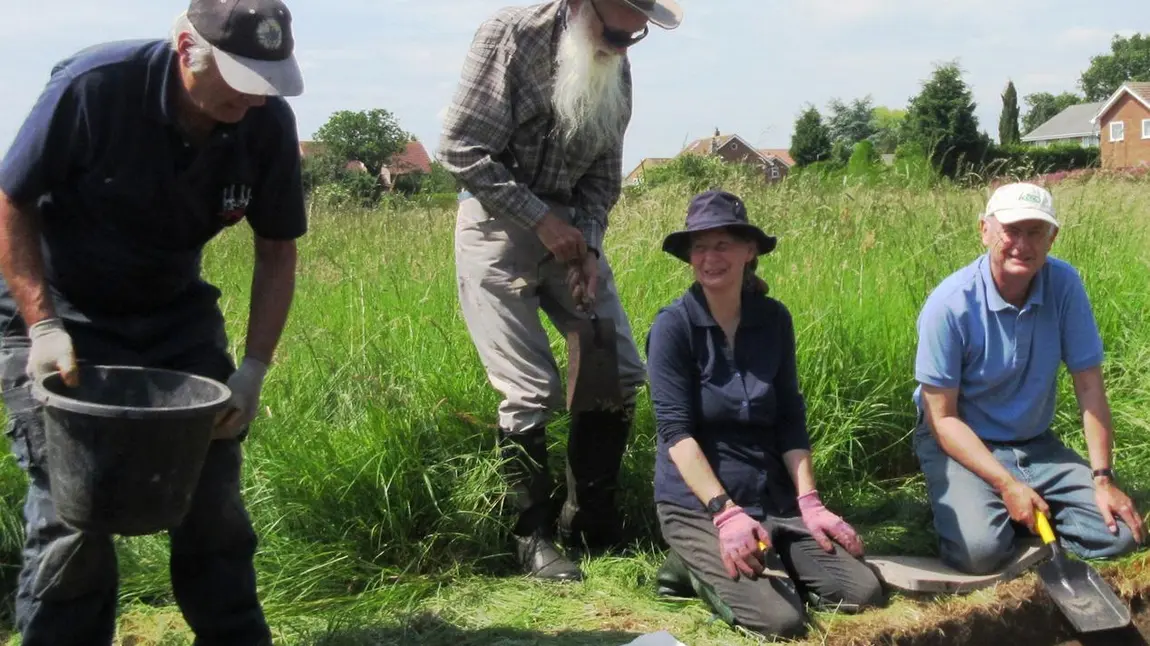Medieval manor to gooseberry patch

The group has had great fun doing geophysical survey of the site which has shown many anomalies hidden below ground – same surveying as the Time Team TV programme. The site still contains the original moat and platform, remains of water features and a pond. There are extensive remains of medieval ridge and furrow ploughing, rare in the agricultural Vale of York.
The project hopes to discover its buried archaeology soon, with the help of our archaeologist Dr. Jon Kenny, by digging trenches and hopefully finding some evidence of the family who lived there in medieval times. Volunteers are welcome to join us at future digs planned for August and September. Find out more information through the Cawood Heritage website.
The children of Cawood School have investigated the history of gooseberry growing in Cawood. They were excited to find evidence through researching the school log books and newspaper articles. They ended with a stall at the school fair selling over 100 gooseberry pies, a tradition that was discovered through the research. A leaflet about gooseberries in Cawood will be published with their results. One of the children’s mothers told us we had really inspired her son to learn: “The whole village is buzzing about gooseberries.”
The ecology of the site has now been recorded and an evening looking at newts was disappointing due to the cold weather in May, though three Great Crested Newts were found with the help of an ecologist with a newt licence.
Margaret Brearley said: “We are having a great time meeting new people and learning about the archaeology of our village. This is a unique opportunity to investigate a site which has never been recorded before. I hope we do find the medieval manor house where the Cawood family lived and who knows what other treasures there are to be discovered. The tradition of gooseberry growing in the village has been a great surprise and is becoming evident that acres of the village were used to grow this fruit.”
Fiona Spiers, Head of the HLF Yorkshire and Humber, said: “Sharing Heritage is a wonderful opportunity for communities to delve into their local heritage and build new skills. We are delighted to be able to offer this grant so that Keesbury Manor Project can embark on a real journey of discovery. Heritage means such different things to different people, and HLF’s funding offers a wealth of opportunities for groups to explore and celebrate what’s important to them in their area.”
Notes to editors
Cawood Castle Garth Group are a group of ten volunteers who live in the village of Cawood. The group was set up over 13 years ago by the local community to investigate the scheduled ancient monument known as Castle Garth Cawood, an area of untouched medieval grassland behind Cawood Castle.
They researched, recorded and had archaeological digs on the Garth involving the community and local school. Access for the disabled was constructed across the site including the building of a bridge over the moat and providing seating. They have provided opportunities for training to the local community and other groups in the district on such topics as landscape surveying, geophysical surveying, mole hill sifting and discovering the wildlife on the Garth. Their History days are popular locally and on one occasion had a visit from the Cawood sword which is in the Yorkshire Museum, a very rare Viking sword. They continue to manage the Garth site and research the history of the village.
Further information
Margaret Brearley, Cawood Castle Garth Group Secretary on 01757 268 666 or info@cawoodheritage.org.uk.
